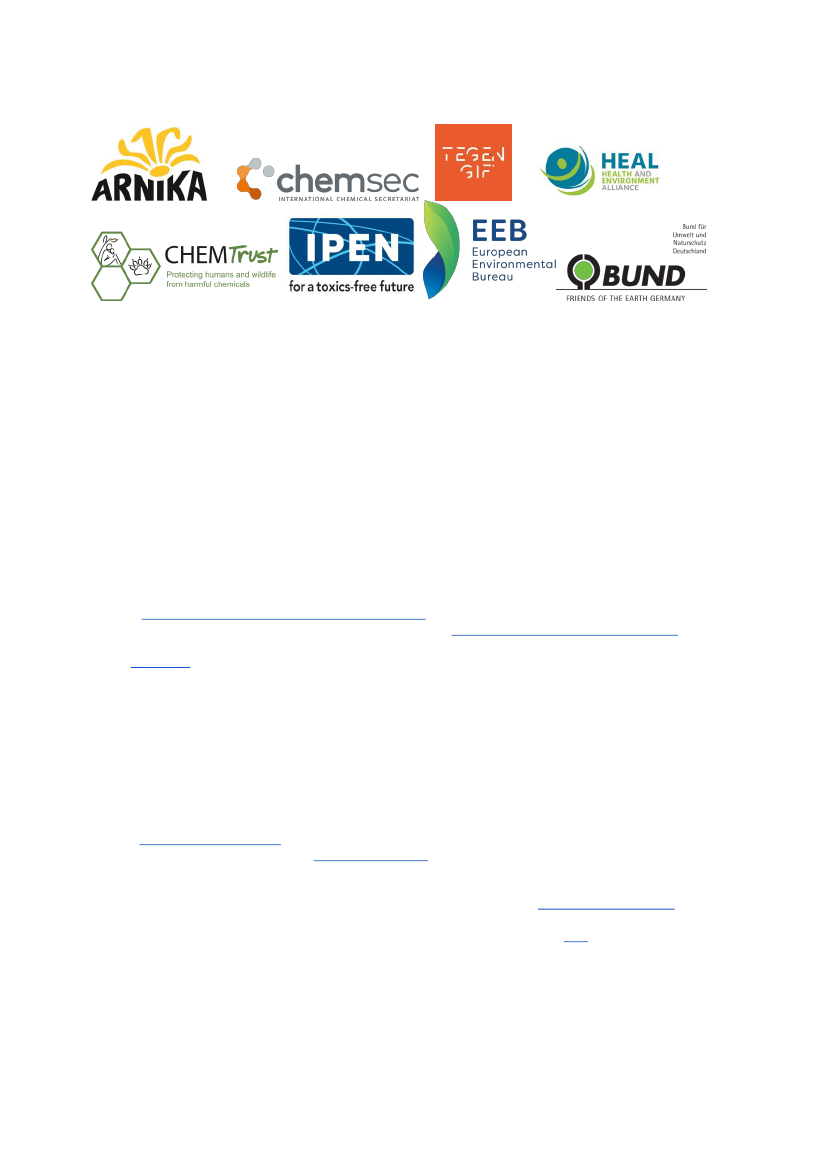
To:
Peter van der Zandt, Director of
ECHA
Giuseppe Casella, Head of Unit REACH, DG Grow
Cristina de Ávila, Head of Unit Safe and Sustainable Chemicals, DG Environment
Copied:
Environment Ministries of Germany, the Netherlands, Sweden, Denmark and Norway
16 May 2022
We, the signatories of this letter, environmental NGOs working on phasing out toxic substances globally, welcome the
EU Commission’s and ECHA’s progress to ban PFHxA, its salts and related substances. This significant group of PFAS should
be banned from all non-essential uses since alternatives are readily available. However, we are writing to you today to
raise concerns and make sure the process stays in line with the intentions set by the Chemicals Strategy for Sustainability.
The EU’s
restriction on PFHxA, its salts and related substances
(“C6”) is a crucial regulatory measure: it proposes to ban
a large sub-class of PFAS that leads to high releases and exposures.
The SEAC’s meeting of 1st December 2021
finalised a
two-year process with a final opinion proposing few derogations and limited transition times. Notably on fire-fighting
foams,
it proposes
a three-year phase-out and only one limited derogation. This restriction proposal is an important step
towards a non-toxic environment.
We have the two following concerns:
A) The delay in adopting the PFHxA restriction;
B) The weaker proposal of the restriction on PFAS in firefighting foams.
A) Six months after its adoption by ECHA’s committee for socio-economic assessment (SEAC), the final opinion has
not been submitted to the Commission yet, despite REACH calling for ECHA to submit the final opinion “without
delay” to the Commission (REACH Art. 72 (1)). This delay and the recent publication of a restriction proposal on
PFAS in fire-fighting foams
(see concern B) risk derailing the action on PFHxA. The EU’s delay is in stark contrast
with the rapid and general bans
enacted e.g. in states
such as Washington State, Illinois and Connecticut in the
U.S.
B) The PFAS fire-fighting foam restriction is supposed to set the tone for the
universal PFAS restriction
(dossier to
be published in early 2023). However, it addresses the same uses in FFF as the C6 restriction, while proposing
more derogations and vastly longer transition times (overview table available
here).
This proposal
introduces
measures that will mostly profit the commercial interests of PFAS producing companies at the expense of
their fluorine-free competitors. It also uses ECHA’s and other’s resources inefficiently and
weakens the C6
restriction: these are hardly steps in the right direction.